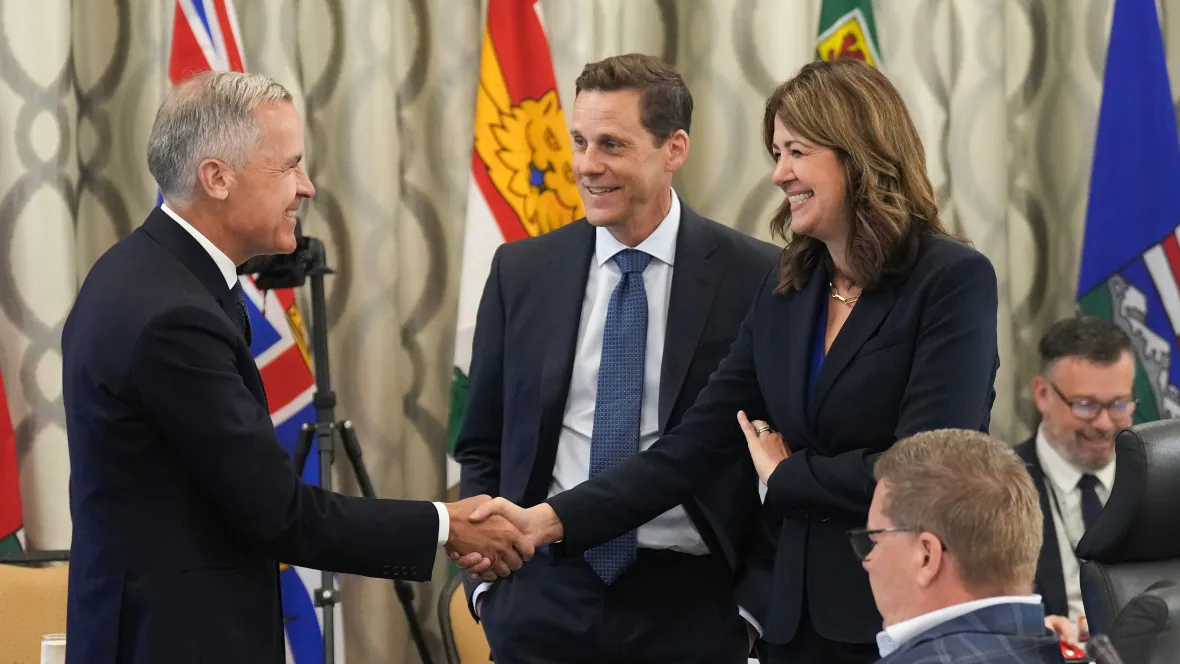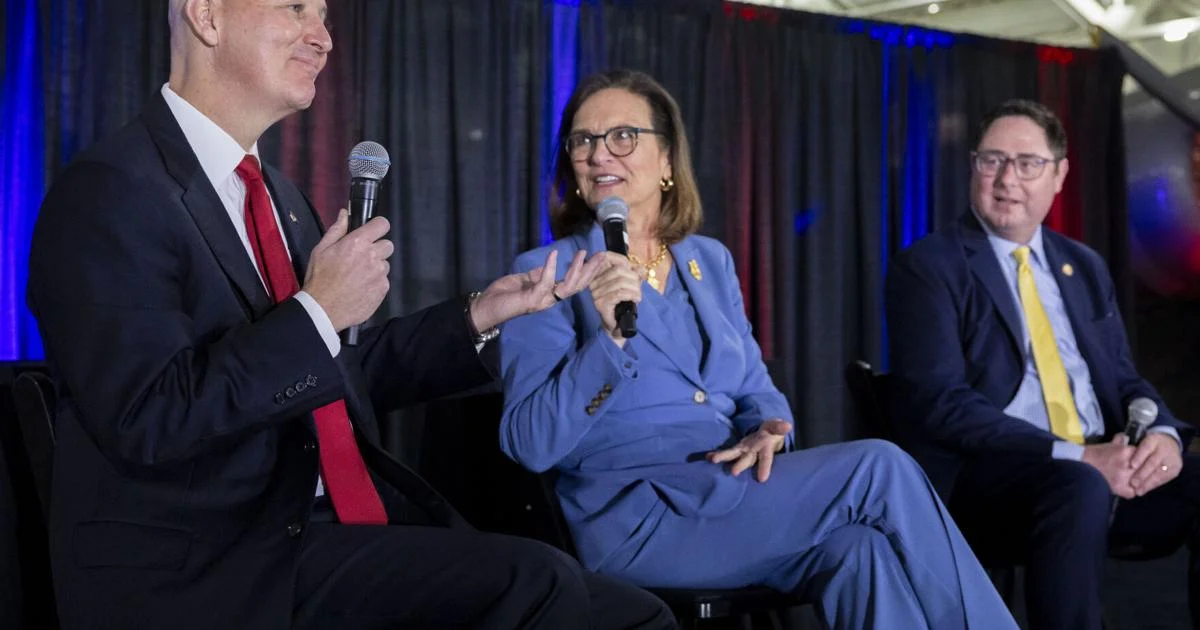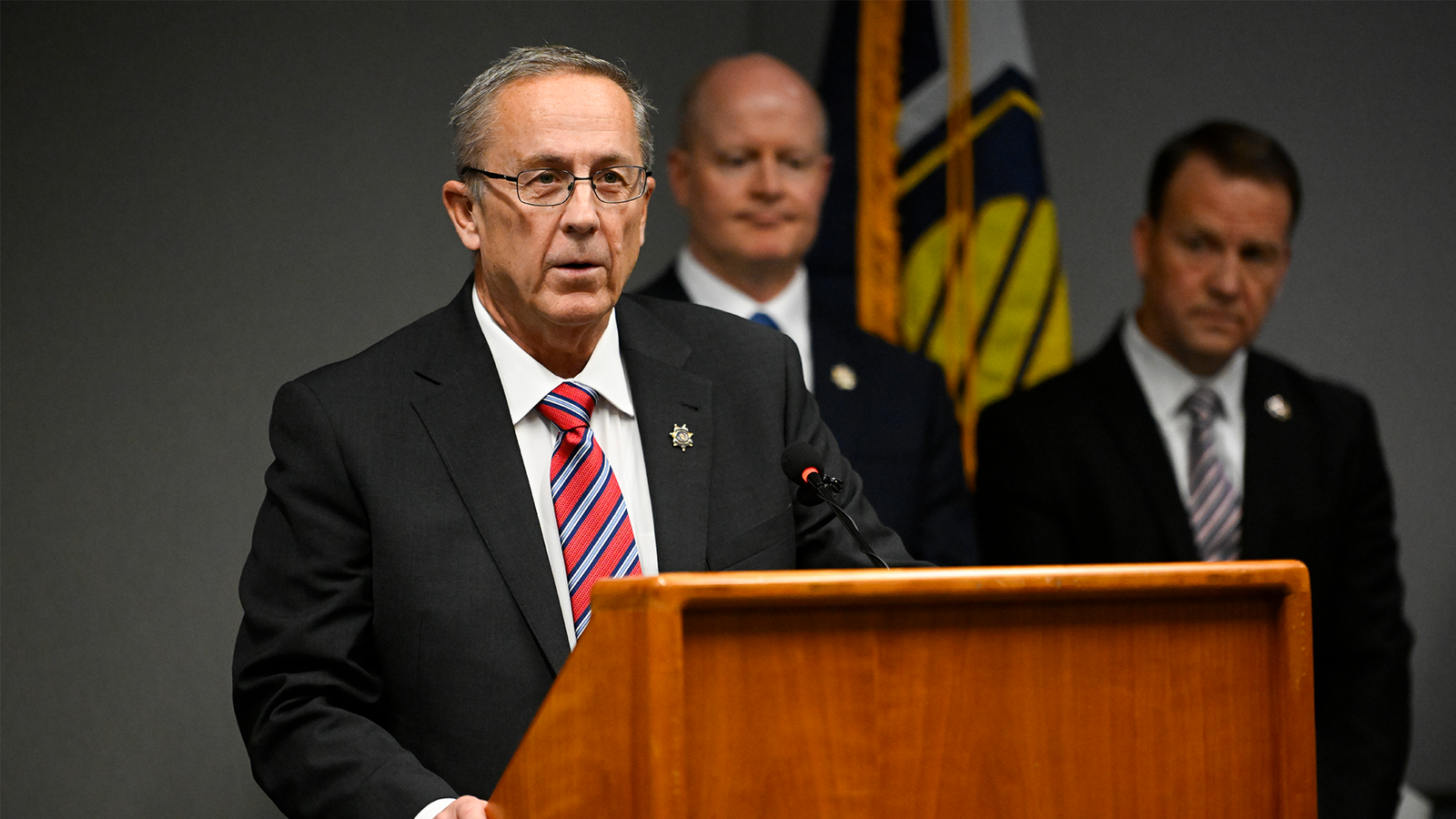By Aaron Wherry
Copyright cbc

Announcing her intention to propose an oil pipeline that would run across northern British Columbia from Alberta to the Pacific Ocean, Premier Danielle Smith declared that this would be “a test of whether Canada works as a country.”
It’s at least not obvious why the fate of any single, specific infrastructure project should necessarily count as a test of whether Canada can rightfully consider itself a properly functioning federated nation state and a respectable liberal democracy.
And if one did want to place such emphasis on a single pipeline, it would likely not be the mere construction of the project that would count as the test, but rather whether it could be constructed in a way that was both environmentally responsible and broadly acceptable to those Canadians who will be most impacted.
But Smith’s preferred framing creates a challenge and a potential trap for Prime Minister Mark Carney.
The Alberta premier seems to have in mind something like the previously proposed Northern Gateway pipeline, which would have run from Bruderheim, Alta., to Kitimat, B.C. On Wednesday, Smith blamed a “political decision” for the demise of that proposal in November 2016. But the story of Northern Gateway is a bit more complicated than that.
The previous Conservative government officially (and unenthusiastically) approved the project in 2014, but with 209 conditions that had to be met for the pipeline to proceed. At the time, just 37 per cent of British Columbians approved of the pipeline and the premier of the province, Christy Clark, had attached her own five conditions. Then, in June 2016, the Federal Court of Appeal struck down the project’s approval on the grounds that the federal government had failed to adequately consult with First Nations groups.
Conservative Leader Pierre Poilievre has suggested the federal cabinet could snap its fingers and make Northern Gateway reappear. And Smith insists that it is only the existence of certain federal regulations that is preventing a private-sector proponent from stepping forward.
But less than an hour after Smith finished speaking to reporters, an alliance of First Nations in British Columbia released a statement reiterating their opposition to such a project.
“As the rights and title holders of B.C.’s north and central coast and Haida Gwaii, we must inform Premier Smith once again that there is no support from Coastal First Nations for a pipeline and oil tankers project in our coastal waters,” said Marilyn Slett, president of the Coastal First Nations-Great Bear Initiative.
Smith said her government was already pursuing engagement with Indigenous groups and she expressed hope that Indigenous communities would be at the table as “co-owners of a project.”
“It’s about working together from the beginning to ensure that we get it right this time,” Smith said, an implicit acknowledgement that things haven’t gone perfectly in the past.
Is the ball in Carney’s court?
Addressing Indigenous and local concerns would seem to be the primary responsibility of the proponent, who is now Smith. But in an interview with CBC’s Power & Politics, Smith cast her eyes ahead and elsewhere.
“This is really going to be in the federal government’s hands,” she said. “The ball will be in the prime minister’s court on this.”
At the moment, there is no ball — there is only the notion of a ball. And Carney might fairly conclude that he is not yet under any obligation to make a play of any kind.
On Wednesday, Natural Resources Minister Tim Hodgson released a three-paragraph statement that, in part, seemed to describe the basic components the federal government was expecting to see in a ball.
“Building major projects includes meaningful consultations with Indigenous rights holders, working with all affected jurisdictions and alignment with Canada’s objectives with respect to climate change and clean growth,” Hodgson said.
“Once any proponent has done this work, the federal government is open to evaluating a project on its merits.”
By that account, Smith would seem to have some work to do, including outreach to B.C. Premier David Eby.
Nonetheless, Poilievre insisted on Thursday that “there’s only one person who will decide if this pipeline gets built and it’s Mark Carney.” The newly proposed pipeline, Poilievre said, was a “litmus test” for the prime minister.
The political game Poilievre is trying to play is not hard to understand. But, again, it’s not obvious why Carney would want to play along. At least until there’s an actual ball to play with.
The last prime minister did make it his responsibility to get a pipeline built. While Justin Trudeau’s government walked away from Northern Gateway, it approved the Trans Mountain Expansion and went so far as to have the federal government pay for the construction (at a cost of $34 billion). That government was working with an Alberta government that was committed to ambitious climate policy — including a price on carbon — but the prime minister also committed federal funds to marine protection and went to B.C. to defend the pipeline decision.
But whatever Trudeau achieved in ensuring that pipeline got built, he did not come away with a lasting political and industry consensus on oil and climate policy. While Smith has talked about a “grand bargain” that would include a major carbon capture and storage project, she has frozen her province’s industrial carbon price, arguably weakened the underlying system and opposes the federal benchmark. Oil industry executives have also called on Carney to repeal the federal rules for pricing industrial emissions. (The federal Conservatives have also promised to scrap the federal price.)
Meanwhile, emissions from the oilsands continue to rise and the oil and gas sector is now projected to account for 31 per cent of Canada’s total national emissions.
If Carney is even going to play ball — if or when there is a ball to play with — he might at least hope to get more out of it than his predecessor did.



